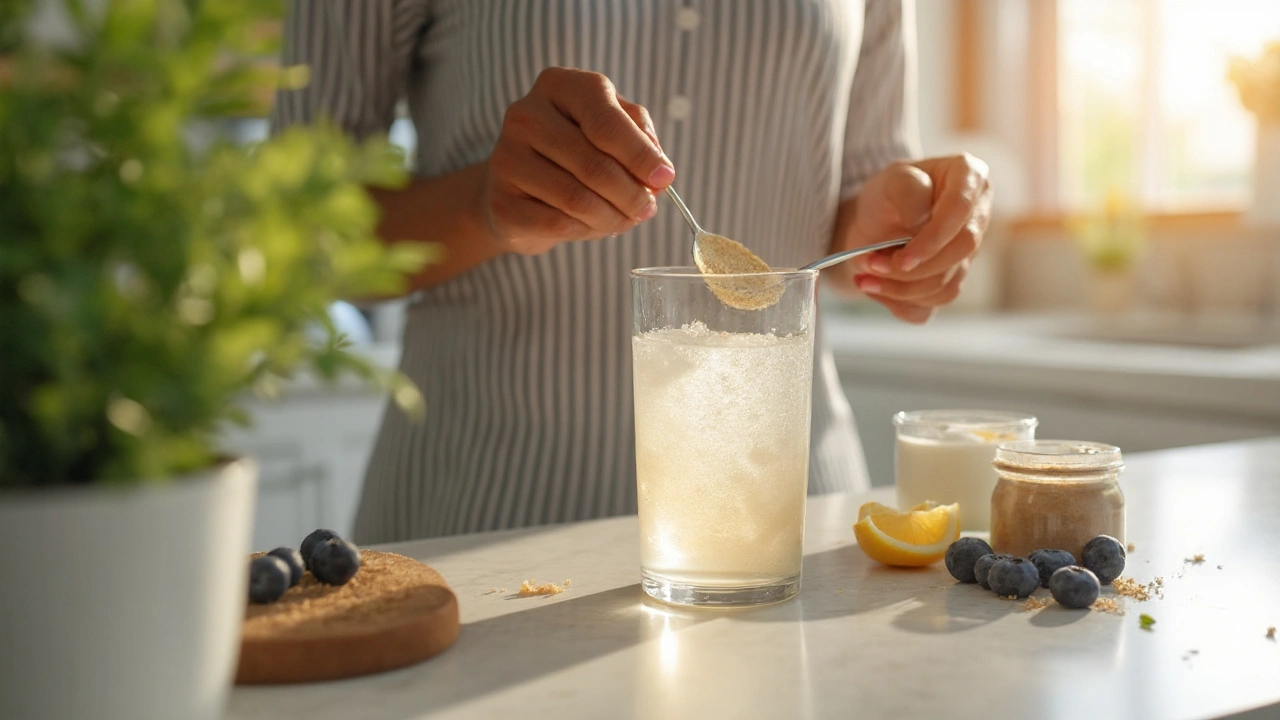Blond Psyllium: Benefits, Uses and Simple Tips
If you’ve been looking for a natural way to boost fiber intake, blond psyllium might be the answer. It’s a type of husk that swells in water, creating a gentle bulk that helps move food through your gut. Unlike some harsh laxatives, it works slowly and keeps things regular without sudden trips to the bathroom.
What is Blond Psyllium?
Blond psyllium comes from the seeds of Plantago ovata, a plant that grows in warm climates. The husk is stripped off, dried, and milled into a fine powder you can mix into drinks or sprinkle on food. The key thing is its soluble fiber, which dissolves in water and forms a gel‑like substance. That gel traps waste, slows sugar absorption, and can even lower cholesterol when taken regularly.
How to Use Blond Psyllium Safely
Start with a small dose—about one teaspoon (5 g) mixed with at least eight ounces of water or juice. Drink it right away, then follow up with another glass of liquid to prevent it from thickening in your throat. If you’re new to fiber, increase the amount slowly over a week or two. Most people find 2‑3 teaspoons a day enough for regularity, but you can adjust based on how your body reacts.
Timing matters. Taking blond psyllium in the morning can set you up for a smooth day, while a dose before bedtime helps with nighttime digestion. Just avoid taking it at the same time as prescription meds; the fiber can bind to some drugs and reduce their effectiveness. A two‑hour window before or after medication is a safe rule of thumb.
Hydration is non‑negotiable. The fiber expands, so you need plenty of fluids to keep it moving. Aim for at least eight glasses of water a day, and more if you’re active or live in a hot climate. Skipping water can lead to bloating or, in rare cases, intestinal blockage.
People with certain conditions should check with a doctor first. If you have a history of bowel obstruction, Crohn’s disease, or severe diarrhea, the added bulk could cause problems. The same goes for anyone on a low‑carb or ketogenic diet, as the extra carbs in the husk might affect ketosis.
Blond psyllium isn’t just for constipation. The soluble fiber can help stabilize blood sugar spikes after meals, making it a handy tool for folks with Type 2 diabetes. It also feeds good bacteria in the gut, supporting overall microbiome health. Some users report softer skin and better weight management, likely because the fiber keeps them fuller longer.
If taste is an issue, blend the powder into smoothies, oatmeal, or yogurt. The neutral flavor hides well, and the extra thickness can make a smoothie more satisfying. For baking, you can substitute a small portion of flour with psyllium to boost fiber without changing texture dramatically.
In short, blond psyllium is a low‑cost, versatile supplement that can improve digestion, support heart health, and help maintain steady energy levels. Keep the dosage modest, stay hydrated, and listen to your body. With those basics covered, you’ll reap the benefits without any nasty side effects.

Blond Psyllium (Plantago ovata) Guide 2025: Benefits, Dosage, Safety, and How to Use It
Clear guide to blond psyllium: what it is, proven benefits, best doses, how to mix, who should avoid, and safety tips backed by current research.
Read More